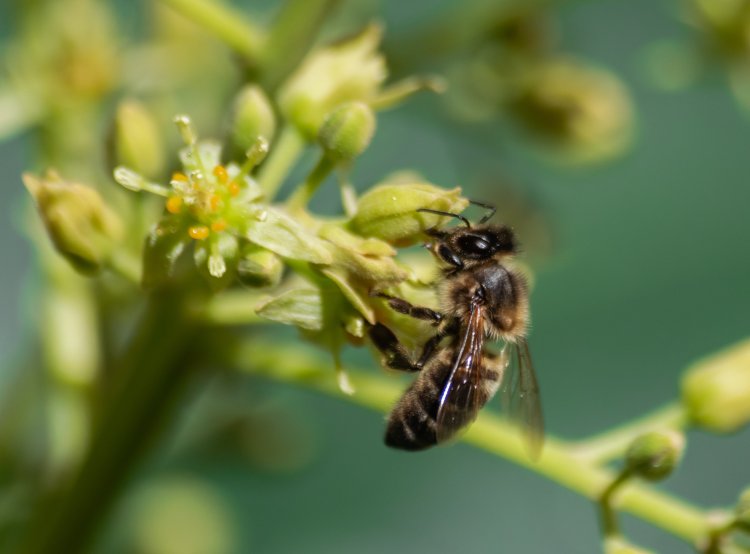Russians are warned against gathering small clusters of white flowers in forests. May lily is both a dangerous flower and a Red Book specie. This material is about the plants growing in forests and fields that should be avoided.
Poisoning, headache, nausea, skin burns, even paralysis and death in extreme cases – these are the consequences that a flower carelessly sniffed at or gathered may cause. Kids may eat bright berries of hazardous plants through their carelessness. Some of them may be mistaken for edible analogs: poisonous narcissus bulb looks like onion. There are plants that are hazardous in parts – for instance one should be watchful of their berries or blossom dust.
Poisons produced by plants are called phytotoxins. In the first turn, they protect the fruit, leaves and stems from herbivorous animals. Chemical protection is a common feature of plants. There also are alkaloids. These are more widespread and versatile in structure if compared to other ones. This group of phytotoxins includes, for instance, morphine, caffeine, cocaine, strychnine, quinine, and nicotine. Alkaloids are the most common, yet not the only organic compounds belonging to the class of phytotoxins. This group also includes glycosides, steroids, isoprenoids, phenolic compounds, and lectins.
Some poisonous plants may belong to the class of medicinal herbs at the same time. Herbs, leaves, and berries harmless for people may be deadly for insects, birds, or fish, while the level of toxicity may vary depending on the area where a flower is growing, the weather in a certain year or the plant’s maturity stage.
May lily is hazardous wholly. Even the water where the flowers are put into becomes poisonous. A short herbaceous plant with large oval leaves. There are two of them most often, though the plants with one or three leaves are met. The tassel including a dozen white flowers has a strong and very pleasant smell – the May lily is in blossom from May to early June. The fruit of this plant are especially dangerous – red berries appear in early July and grow away closer to fall. The symptoms of poisoning include giddiness, nausea, sleepiness, faintness, and spasms.
The main toxic agent of May lily is convallatoxin. However, this substance is used in medicine. The drugs made of May lily are used for treating acute and chronic cardiac insufficiency, as remedy for headache and medication for making nervous system stronger. For the preparation of drug, the top parts of the plant are gathered during the blooming period and dried out at the temperature of 50-60 degrees in the shade. The overdose of this drug causes poisoning.
Thorn apple is called the devil’s herb. Its very name speaks about its effect. The alkaloids that the plant contains cause tachycardia, disorientation, and deliration. Severe cases of poisoning may even lead to fatal outcome. The plant of nightshade family looks like potato or tomato in appearance. Spiked leaves, white flowers and thorny fruit – a capsule with black seeds inside.
Thorn apple is deliberately grown for the purpose of producing alkaloids for medicine. Leaves are used as raw materials. Active ingredients include hyoscyamine and scopolamine, alkaloids of tropane group. The drugs made of thorn apple are used only on medical prescription as spasmolytic agents: for bronchial asthma, ulcer and bilious colic, as well as for treating travel sickness.
Ancient Galls and Germans knew that the wounded predator would not go far, if one rubbed aconite into the spear or arrow head. They say that the plant had received the wolfsbane name since that very time. In ancient Rome and Greece, a portion of aconite was given to those sentenced to death. The legend says that they poisoned Tamerlane having permeated his headpiece with aconite.
Aconite juice penetrates even through the skin – alkaloid aconitine belongs to the group of strong poisons. Having come in contact with skin, it causes itching and affects skin sensibility. Having been swallowed, aconitine lowers body temperature, causes fever, perspiration, cardiac arrhythmia, paralysis of skeletal muscles, and color perception disorder.
Straight stems up to 1.5 meters high with blue, violet, or less often white or yellow flowers grow in the forests, grasslands and cut lanes among bushes. The locations where aconite grows depend on the type of poisonous plant, which are as many as 330. Aconite tincture is used as painkiller and anti-inflammatory drug for arthritis, arthrosis, radiculitis, osteochondritis, as well as muscle and ligament diseases.
Just 5-7 seeds of castor-oil plant are enough for a fatal outcome. Castor-oil plant is called the strongest poison in the world. Protein poison ricin and alkaloid ricinine cause enteritis, vomiting, and colic, as well as water and electrolyte imbalance. Death comes in 5-7 days, while those having survived cannot fully recover, as ricin destroys the proteins of human tissues.
Castor-oil plant growing in Russia is an annual one up to 5 meters in height. Straight, branchy and hollow stem with large leaves up to 80 cm wide and sphere-like capsule fruit. Its seed looks like a tick, hence the plant’s name (in Russian, words tick and castor-oil plant have the same root). It is from this plant that well-known castor oil is produced. The popular laxative agent is made by cold pressing of the plant. To make the drug safe, the oil is processed by the method of hot steaming – ricin is destroyed at the temperature of 80 degrees.
The world flora includes over 10,000 poisonous plants. Many of them are used for production of medicines.
Photo: martinleber / ru.123rf.com
Based on articles from adme.ru, Wikipedia, Hygienic Education Center of Rospotrebnadzor, botsad.ru






















